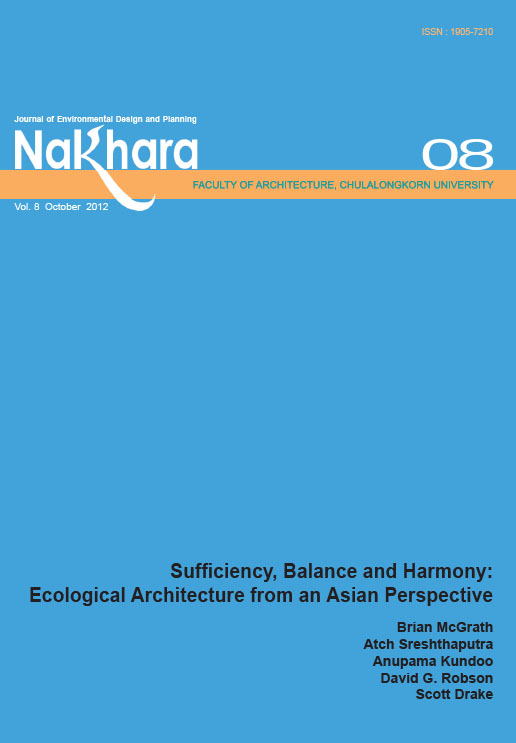Thermal Comfort in the Traditional Rural Bangladesh House
Main Article Content
Abstract
Bangladesh Traditional House (BTH) is considered to be a prime example of environmental design
responses to regional conditions. The house forms, building styles and materials used in construction have signifi cant variations in different areas of Bangladesh, but one element in common is the design concept for the upper space. The upper space of BTH plays a vital role with diurnal variation of ambient environment to provide comfortable interiors. This paper analyses the above hypothesis in the traditional stilt house in the city of Dhaka. The analysis of actual performance of the traditional house may provide information on the effectiveness of applying appropriate principles of passive design for warm humid climates. Empirical studies have been performed in Dhaka city. Internal and external air temperatures and relative humidity were measured for both summer and winter seasons, for a period of six months. The data were collected in three zones: outdoors, indoor and the upper space. Results show that the BTH architectural design solution permits good passive cooling for thermal comfort during both the summer and the winter seasons even in the worst surroundings of dense Dhaka city. The upper space maintains the indoor air temperature within the comfort range for most hours of the day. The design of the upper space with operable windows has a natural cooling effect.

